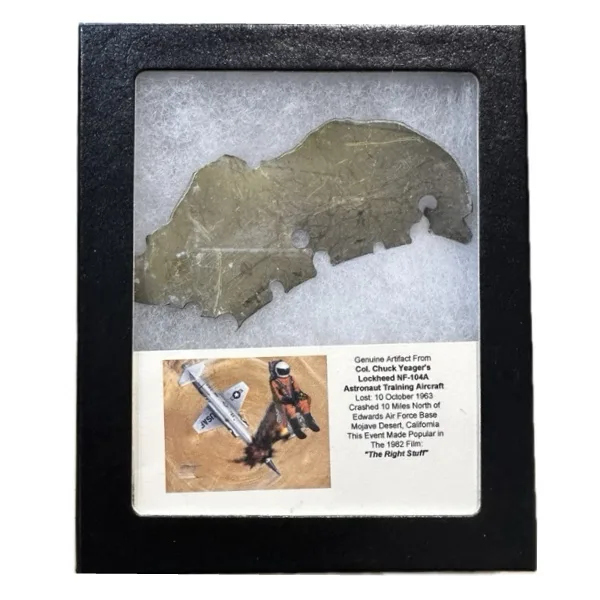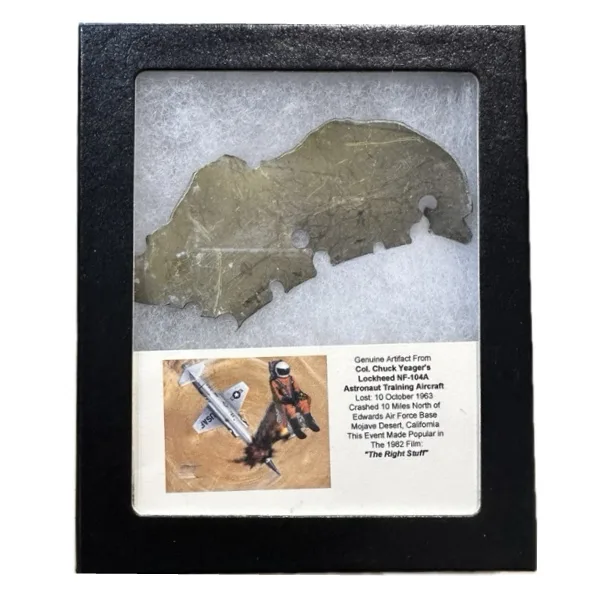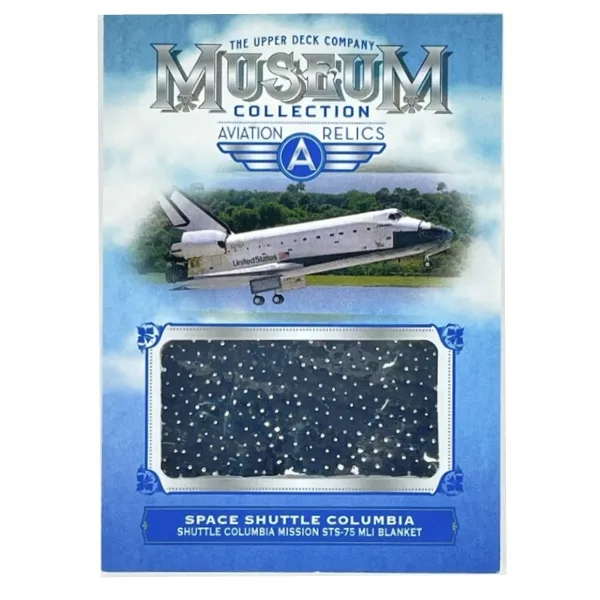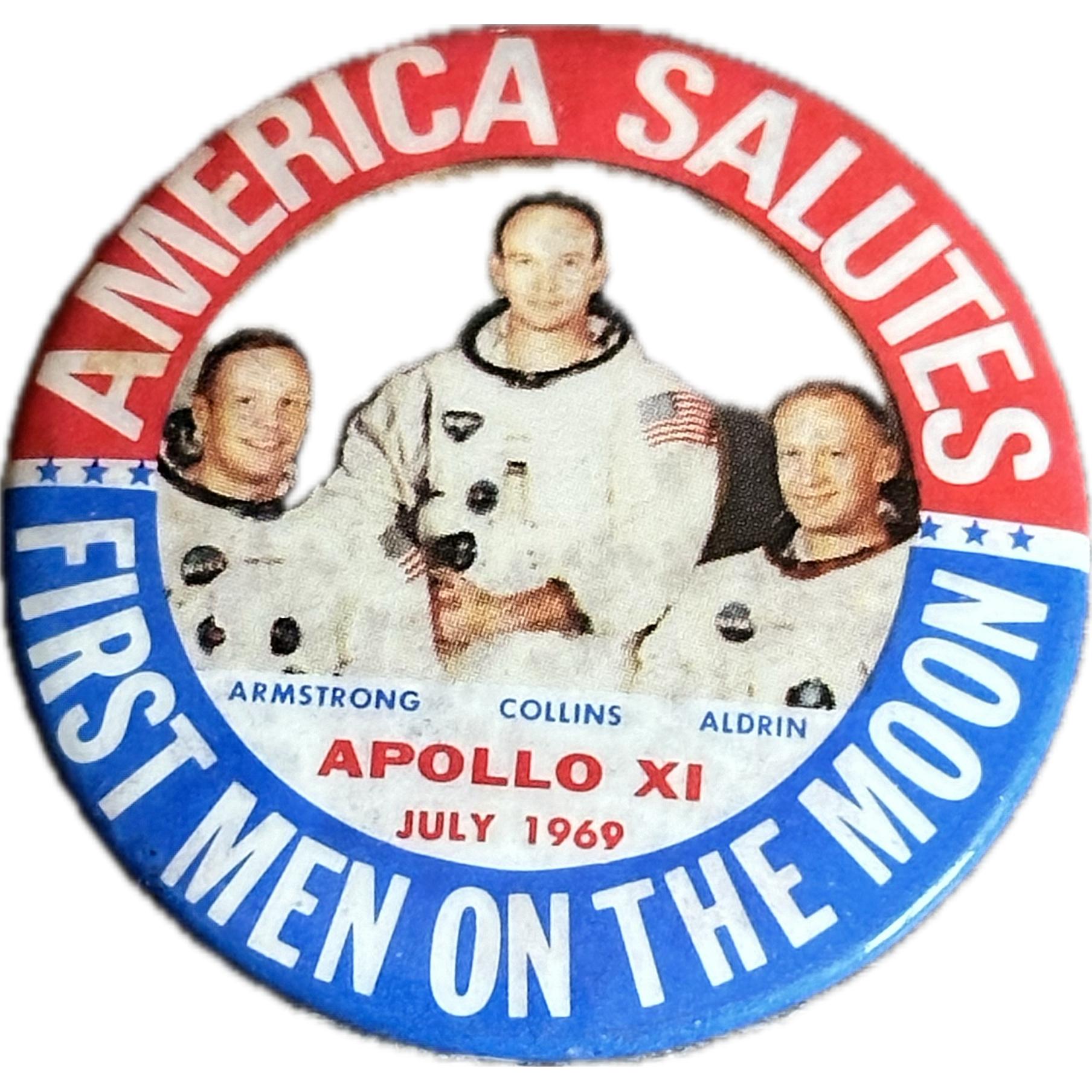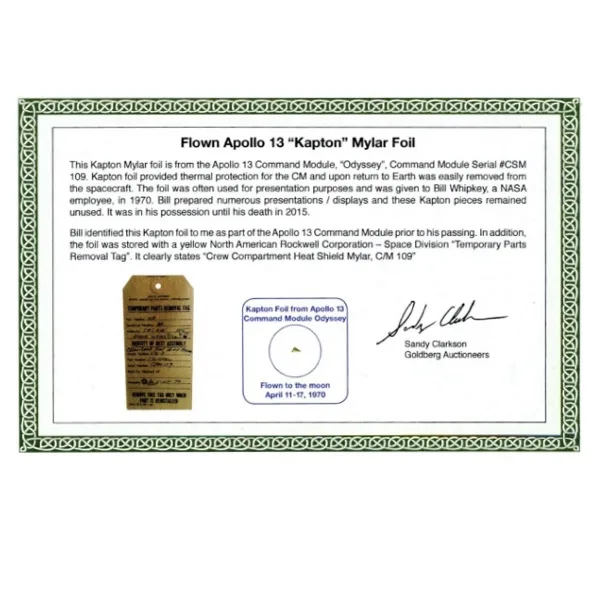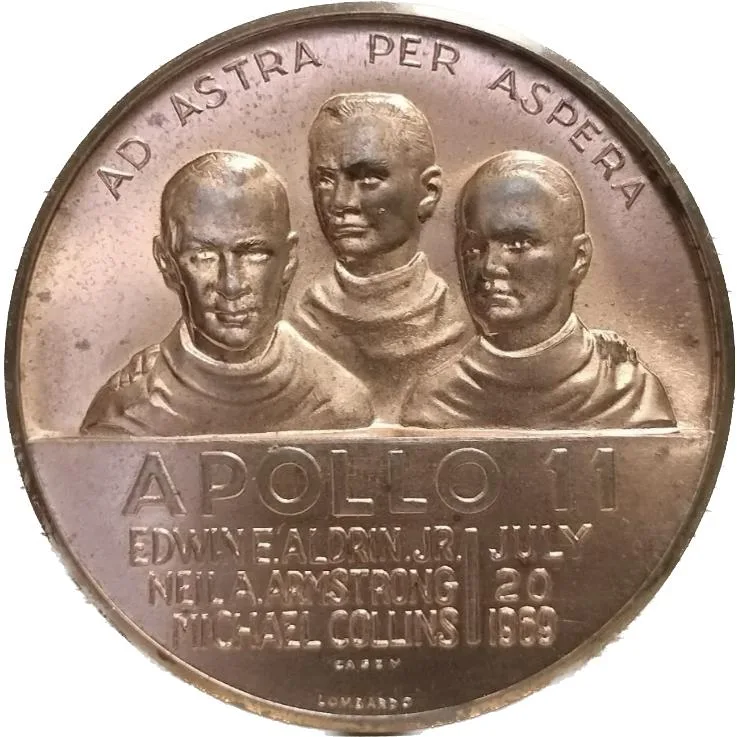Rare Historical Chuck Yeager plane crash fragment, 1963.
Col Chuck Yeager Lockheed NF-104A astronaut training aircraft crashed on October 10, 1963 10 miles north of Edwards Air Force base, Mojave Desert, California. The event was made very popular in the 1982 film “The Right Stuff”. This is an authentic fragment from the famous plane. The fragment measures approx. 4″ x 2″ x 1/4″.
In the annals of aviation history, few figures have achieved the legendary status of Chuck Yeager. His remarkable achievements as a test pilot and his groundbreaking work in breaking the sound barrier made him an icon in the world of aviation. However, in 1963, Chuck Yeager’s storied career took an unexpected and harrowing turn when he survived a plane crash that would test not only his piloting skills but also his resilience and determination.
On December 10, 1963, Yeager was at the height of his career, having already made history by becoming the first person to break the sound barrier in 1947. His reputation as a fearless and skilled test pilot had earned him the respect and admiration of the aviation community. On that fateful day, Yeager was at the controls of an NF-104A, a high-performance aircraft modified for experimental purposes, stationed at Edwards Air Force Base in California.
The NF-104A was a remarkable aircraft designed for training pilots in the art of high-altitude flight and control in near-space conditions. Its engine had been modified to provide additional thrust and reach altitudes of over 120,000 feet. Yeager’s mission was to take the NF-104A to the edge of space, beyond the Armstrong Line, where the human body cannot survive without a pressure suit. It was a daunting task, but for a pilot of Yeager’s caliber, it was just another day at the office.
As Yeager climbed into the cockpit and prepared for takeoff, he couldn’t have anticipated the challenges that lay ahead. The ascent proceeded smoothly, and the NF-104A reached the target altitude of 104,000 feet. However, as Yeager engaged the aircraft’s rocket engine to push it beyond the Armstrong Line, disaster struck. The engine malfunctioned, causing a sudden and violent explosion.
The explosion sent the aircraft into a wild spin, causing Chuck Yeager to lose control. With the plane hurtling toward the ground at an alarming rate, the situation looked dire. The intense G-forces and turbulence made it nearly impossible for Yeager to regain control of the plummeting aircraft. For a lesser pilot, it would have been a death sentence, but Chuck Yeager was no ordinary pilot.
In the face of such a catastrophic failure, Yeager’s training and experience kicked in. With remarkable poise and quick thinking, he attempted to stabilize the aircraft. Using all his skill and expertise, he finally managed to regain control. However, the NF-104A was severely damaged, and its structural integrity was compromised.
The ordeal was far from over. Yeager faced a difficult decision – bail out or attempt to land the damaged aircraft. He chose the latter, displaying an extraordinary level of composure. Flying the crippled plane back to Edwards Air Force Base, Yeager executed a heart-stopping emergency landing that saw the NF-104A crash-land on the dry lakebed. The impact was jarring, and the aircraft was left in ruins.
Miraculously, Chuck Yeager survived the ordeal, emerging from the wreckage with a broken arm and burns. His quick thinking and exceptional piloting skills had once again saved his life. The incident was a testament to the unyielding spirit of a true aviation pioneer.
The crash of the NF-104A marked a turning point in Chuck Yeager’s illustrious career. Though he had once pushed the boundaries of human flight, he recognized the risks involved in his line of work and the ever-present danger of unforeseen accidents. This crash, while a close call, ultimately did not deter him from pursuing his passion for aviation.
Yeager continued his career in the U.S. Air Force and went on to achieve even greater heights, both literally and figuratively. He remained an inspiration to aspiring aviators and an enduring symbol of the indomitable spirit of those who dare to explore the skies.
Apollo 11 Command Module: Learn More
Destination Moon-Virtual Tour: The Smithsonian

